
I have to admit, when I planned to stop in Barcelona, I was looking forward to rediscovering the city I first visited back in 2003. I wanted to visit La Sagrada Familia, stroll along Las Ramblas and finally make my way to the Parc Guell. And I wanted to indulge in tapas, tapas and more tapas.
Taking a tour of the city’s chocolate hot spots never crossed my mind – likely because I had no idea that the history of chocolate and the history of Spain were closely intertwined. But when Context Travel invited me to join one of their City of Chocolate tours, I just couldn’t resist. They may have sucked me in with the promise of several chocolate tasting stops but I came away with an overwhelming amount of information about chocolate as well.
Discovering the history of chocolate
The history lesson started almost immediately as our guide explained that Christopher Columbus was the first to bring cocoa beans back to Europe, presenting them to King Ferdinand and Queen Isabella of Spain in 1493. This seemed completely plausible to me, but it also peaked my curiosity so I dug a little deeper as I was writing this post. According to Wikipedia, Columbus didn’t encounter cocoa beans until 1502, at which time he didn’t realize their value and didn’t bring them back to Spain. Personally, I don’t care too much which is true (and we all know Columbus tends to get credit for things he didn’t really do). The important thing is that everyone seems to agree that the Spanish “discovered” chocolate in Central America and that they were responsible for introducing it to Europe.
As we walked through Barcelona’s Gothic Quarter, we learned even more.
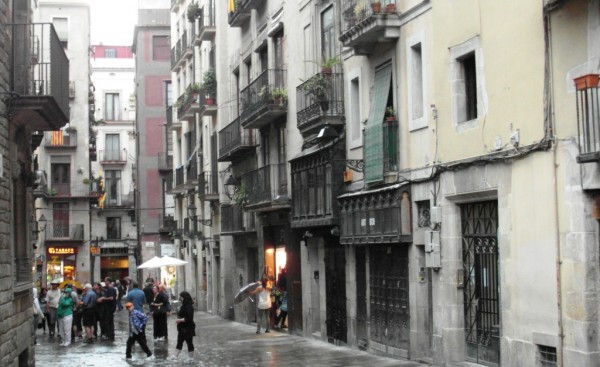
Chocolate actually existed in Central America for about 3,000 years before the Spanish showed up. The Mayans thought it was the drink of the gods and used it at religious ceremonies, combining cocoa beans, chili and water. Fast forward to the 1500s, when, after the conquest of Mexico, the Aztec emperor Montezuma gave his conquerors fifty jars of chocolate. While they didn’t initially love the drink made from cocoa beans, the Spaniards eventually added sugar cane and started sending chocolate back to their homeland.
Soon, chocolate became a drink for the Spanish nobility and royals, who managed to keep it a secret from the rest of Europe for much of the 16th and 17th centuries. It wasn’t until a Spanish princess married into the French royal family that chocolate appeared in France and the Spanish clergy were responsible for bringing the drink to Italy. Eventually, the enterprising Swiss added milk to the concoction, resulting in the “milk chocolate” that is my personal favorite today.
Sampling Barcelona’s best chocolate
We kicked things off at Fargas, the third oldest shop of any kind in Barcelona and the oldest chocolate shop. There, we sampled cava filled chocolates and catanies – almonds covered with a mix of dark chocolate, white chocolate and powdered chocolate.
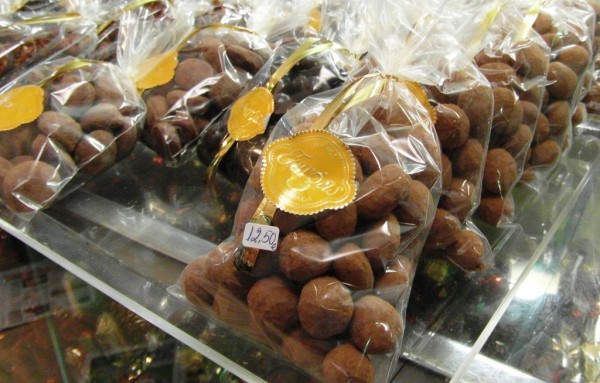
From there, we went on to Escriba, the third oldest chocolate shop in the city located right on Las Ramblas. There, we saw the creative, artistic side of chocolate. We also got a little silly, snapping a group photo with each of us sporting bright red chocolate lips.
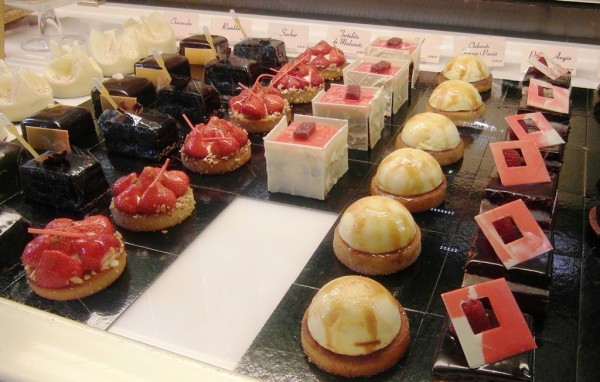
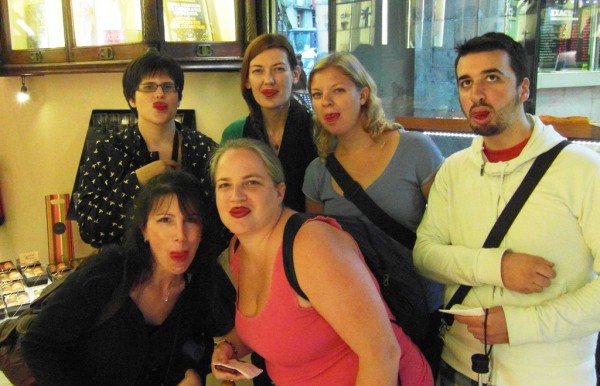
Next up was Granja Viader – the shop that created what our guide described as the first chocolate milkshake. Now, I love chocolate milkshakes and I was picturing the ice cold yumminess of a McDonald’s chocolate shake or a Wendy’s Frosty. So I was a little disappointed that what she was calling a milkshake was actually just chocolate milk. Packaged in a nice glass bottle, it was pretty good nonetheless and provided the perfect complement to our cups of hot, thick chocolate.
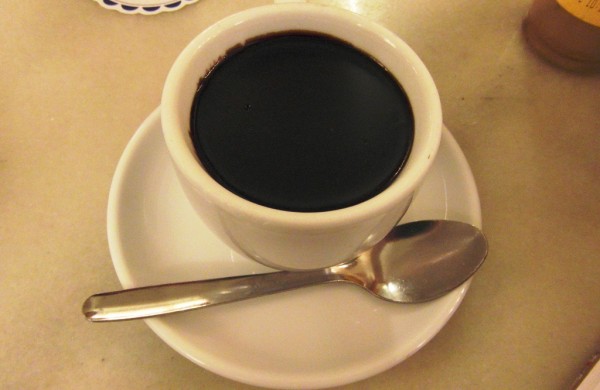
Finally, we visited the modern, upscale Cacao Sampaka store. The manager gave us a passionate overview of how exactly chocolate is made and introduced us to the idea of tasting chocolate much as you would taste wine, experiencing it with all five senses. We also got to sample some of their small chocolates, which come in collections of flavors such as dried fruit and nuts, herbs and flowers, fruits and preserves and “gastronomic innovations.” Unfortunately, they couldn’t guarantee that they were gluten-free and safe for me to try, but I was still intrigued by some of the flavors, like mandarin cinnamon, pineapple coconut and parmesan.
After three hours, it was time to call it a day – at which point I made a beeline for the nearest grocery store to pick up some more chocolate, of course.
Thank you to Context Travel for hosting me on this tour. All opinions expressed above are mine and mine alone
